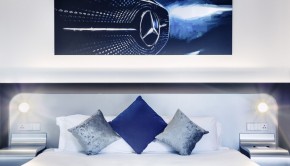Porsche developed his 1st Hybrid in 1901 and it wasn’t the Cayenne
It was called the Lohner-Porsche Mixte Hybrid. Despite having no formal engineering education, Porsche quickly drafted up plans for an ambitious project, harnessing electric power. The car boasted a completely friction free drivetrain, due to the hub-mounted electric motors which negated the use of gears or driveshafts. Each internal-pole electric motor was capable of 2.5 hp (1.9 kW) to 3.5 hp (2.6 kW) peaking to 7 hp (5.2 kW) for short bursts.
The car created a press whirlwind, and news traveled as far as Britain, from where Lohner received their first order for an example. However, the car, ordered by a Luton dweller, was to be significantly different from the car shown at the Paris Expo. It had to be capable of running on petrol, as well as electricity, of carrying four passengers (the demonstrator was a two-seat, low slung type) and also had to be four-wheel drive. As a result, the final product was a monster — it required 1.8 tonnes of batteries consisting of a forty-four cell 80 volt lead battery, and cost a massive 15,000 Austrian Crowns. However, the car was completed on time, and was delivered personally by Porsche. The buyer was so impressed that he purchased another, two-wheel drive example. While it had a form of battery, they were not charged from external sources so it was not a Plug-in hybrid Electric Vehicle or PHEV.
At the same time, the Lohner company had broken the Austrian land speed record, with the car’s top speed of 37 mph (60 km/h). With Porsche at the wheel, the car was victorious in a number of motorsport events, and by 1905, Porsche had won the Potting Prize as Austria’s most outstanding automotive engineer. In 1906, Porsche was snapped up by Daimler-Benz as chief designer, and left Lohner coachworks for good. Jacob Lohner said, at the time: ‘He is very young, but is a man with a big career before him. You will hear of him again.’
The Lohner-Porsche’s design was studied during NASA’s efforts to create the Apollo program’s Lunar Rover, and many of its design principles were mirrored in the Rover’s design. The series hybrid concept underpins many modern railway locomotives, and interest in series hybrid automobiles is growing rapidly.














